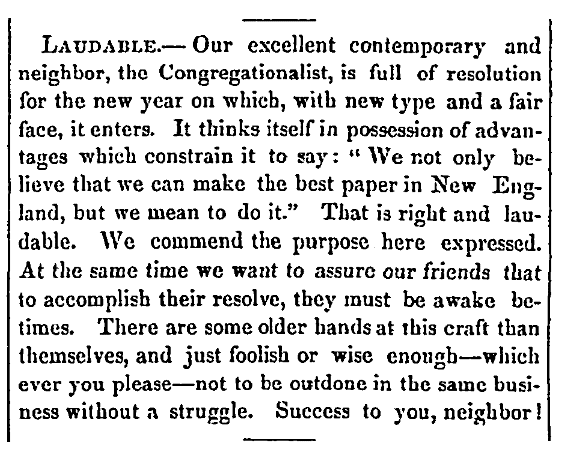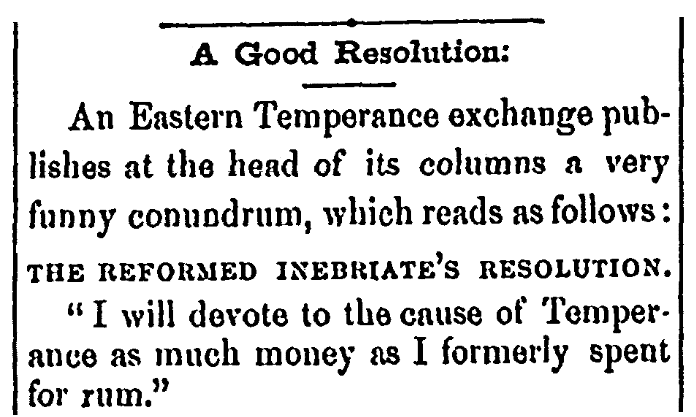Introduction: In this second of a two-part article, Mary Harrell-Sesniak gives the answers to her article yesterday, in which she challenged her readers to find New Year’s resolutions of yesteryear in old newspapers. Mary is a genealogist, author and editor with a strong technology background.
Here are the answers to the historical New Year’s resolutions challenge published yesterday on the GenealogyBank blog.
- 1854: Which newspaper’s resolution was: “We not only believe that we can make the best paper in New England, but we mean to do it.”
Answer: the Congregationalist

- 1868: During the height of the anti-drinking movement, an Eastern Temperance exchange suggested that a supporter should devote as much cause to Temperance as was formerly spent on a specific type of alcohol. Which one was it?
Answer: rum

- 1881: A joke published this year suggested that a wife who “never fails to meet you at the door with a kiss” might be doing this for another reason. What was it?
Answer: “She’s just dying to know if you have broken your New Year’s resolution and commenced on lager again.”
- 1887: Fill in the blank for this resolution by Henry George: “What the working people want is not more work, but more things with __________ __________.”
Answer: less work
- 1895: Journalists often joked about resolutions and what was trendy. One writer suggested that the new woman of that year might resolve to not wear patched __________.
Answer: bloomers
- 1906: The Greensboro Loan and Trust Company officers suggested in an advertisement what they considered to be a sensible resolution for the New Year. It was “Resolve to be better off at the end of next year than you are now.” What was the interest rate they paid on accounts?
Answer: 4%
- 1909: A well-known actor, William Faversham, wrote that the one resolution for the New Year that all actors should make was to __________ __________.
Answer: stop eating
- 1921: An anonymous writer said: “A good resolution is of no use unless it’s backed by a __________ __________.”
Answer: strong resolution.
- 1928: William F. Thompson of the Clement-Walsh Players resolved to not work more than __________ __________ this year.”
Answer: 52 weeks
- 1930: What was John J. Pershing’s four-word resolution for the New Year? __________ __________ __________ __________.”
Answer: “Mind your own business.”
Did you take the Genealogy Research Challenge: Find These Historical New Year’s Resolutions yesterday? If so, tell us how you did in the comments section below.
